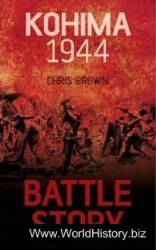This was the most disastrous reverse ever inflicted on a British army. The Japanese had planned for a 100-day campaign, but had taken Singapore in 70. A total of
130,000 British and empire soldiers were captured, including the entire British 18th Division which had only arrived at the end of January and barely took part in the fighting. Vast stocks of all types of military equipment were seized intact. Japanese battle casualties throughout the entire campaign totalled 9,824. MH.
Malayan Communist Party (MCP) see MALAYAN EMERGENCY.
Malayan Emergency (19481960). Many members of the prewar Malayan Communist Party (mcp) served in the Malayan People’s Anti-Japanese Army (mpaja) which offered the only active guerrilla opposition during most of the Japanese military occupation (1941-45). After the war, the mcp soon fell foul of the reinstated colonial government and in 1948 a number of its leaders went underground to initiate a war of liberation on Maoist lines.
Calling themselves the Malayan Races’ Liberation Army (mrla), the communists, almost all ethnic Chinese, enlisted the support of many Chinese “squatters” as a support organization (Min Yuen) whose purpose was to pass food and other supplies to the mrla and act as a low-level intelligencegathering agency.
The ensuing campaign reached its high-water mark for the mrla in 1952 with the assassination of the High Commissioner, Sir Henry Gurney. In his place, doubling as Director of Operations, the British government appointed Gen Sir Gerald Templer, who immediately injected a new sense of purpose into the Security Forces and transformed their morale. The Squatter population was resettled into “New Villages” surrounded by barbed wire; rigorous food control was imposed. This plan had been prepared by Gen Sir Harold Briggs, Director of Operations (1950—51). Chin Peng, the mrla leader, emerged briefly under amnesty from the jungle in 1955 for inconclusive talks with the government and the campaign dragged on until 1960 when virtually all terrorist activity had ceased.
The MRLA failed because the Briggs plan cut the guerrillas’ supply line, isolated them from their supporters and drove them into deep jungle where they could be hunted down. The Security Forces won through good intelligence, constant aerial surveillance of the jungle, painstaking jungle patrolling, and the winning of the hearts and minds of the majority of the civil population. All operations were planned and executed on a joint basis by the civil administration, military, and police, whether at national, state, district or village level. The campaign demanded a disproportionate effort from the British government; 40,000 Commonwealth troops, 60,000 police and more than 250,000 local Home Guards were involved at its height, against never more than
3,000 guerrillas. It remains, however, the only true complete victory over communist insurgency won by a former colonial power and a newly emergent nation since
1945. MH.
Malayan People’s Anti-Japanese Army (MPAJA) see MALAYAN
EMERGENCY.
Malayan Races’ Liberation Army (MRLA) see MALAYAN EMERGENCY.
Malayan Scouts see sas.
Malaysia-Indonesia confrontation (1963—66). After the 1962 Brunei revolt, many of the rebels found sanctuary across the Indonesian border, from where they continued to operate, helped by elements of the Indonesian army.
In answer to this threat, and as the Indonesian government was now actively backing the communists in Seria, harbouring tnku rebels and fomenting dissension throughout what was soon to be East Malaysia, Maj Gen Walter Walker was appointed Commander British Forces Borneo. Experienced in the earlier Malayan Emergency, he immediately stressed the need for the security forces to dominate the jungle. By April 1963 Walker had set up his headquarters in Labuan, with brigade HQs at Kuching and Brunei. The theatre of operations was huge, the
Border with Indonesia being 900 miles (1,450km) long and, because of the wild terrain, very easy to infiltrate. Walker saw the need for air mobility and the campaign hinged on the use of helicopters. Helicopter pads were hacked out of the jungle every few miles and well-protected patrol bases, often with field artillery, were located some miles inside the border.
With the creation of the Malaysian Federation in September 1963, supreme control of military operations passed from British hands, to be vested in the Malaysian National Operations Committee in Kuala Lumpur, of which the British c-in-c. Far East Command, was a member, passing instructions down to Walker as Director of Operations on the ground. Prior to Federation Day, the Indonesian Ambassador had been recalled from Kuala Lumpur and President Sukarno, who laid claim to Borneo, Sarawak and Brunei, promised what he termed a “terrible confrontation”. Within days the Indonesian Army launched an attack on the Malaysian military base at Long Jawi which was repulsed with the aid of “stops” placed on the Indonesian border by helicopter to intercept the attackers’ retreat. In December, the Indonesians surprised a Malaysian battalion at Kalabakan, inflicting the most serious reverse of the campaign. Walker’s answer was to strengthen the jungle patrol bases and increase pressure on Indonesian infiltrators and their supporters. A highly successful campaign was mounted to “win the hearts and minds” of the indigenous population and enlist their aid in providing accurate intelligence of Indonesian activity.
The year 1964 saw the climax of the campaign, with an abortive Indonesian parachute incursion into West Malaysia and many border incidents in Borneo and Sabah. The security forces now adopted a policy of “hot pursuit”, chasing Indonesian patrols back across their own frontier. Intelligence sources identified a plan for an all-out Indonesian offensive directed against Kuching, accompanied by a nationwide campaign of civil disturbance and sabotage. At this time. Walker had 10,000 combat troops available.




 World History
World History









